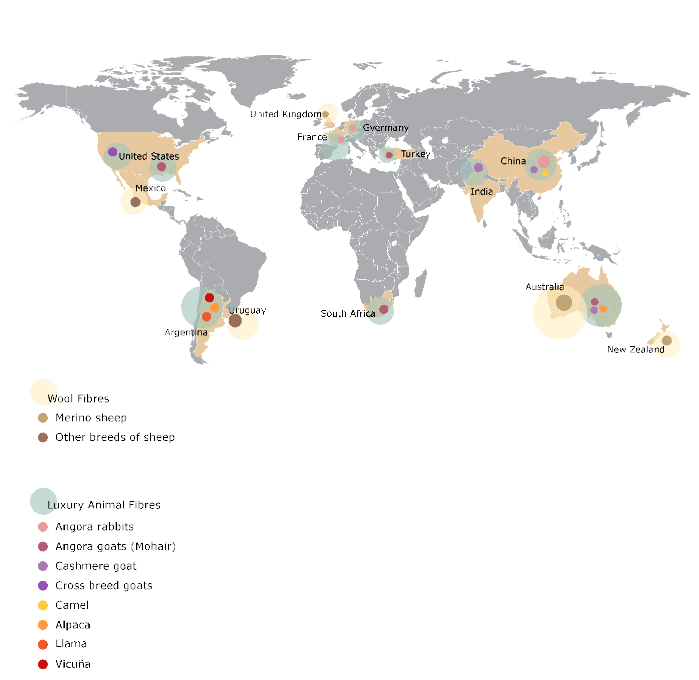 |
 |
 |
||
 |
||||||||||||||||||
|
||||||||||||||||||
|
||||||||||||||||||
|
||||||||||||||||||
|
||||||||||||||||||
|
||||||||||||||||||
ANIMAL FIBRE ORIGINS
Wool Fibres
Wool is a practical fibre and embodies many diverse attributes, being a natural thermo regulator due to its complex structure.
For many countries wool is a secondary product to the farming of sheep for meat. There are many breeds of hair sheep around the world, but it is Australia’s merino and New Zealand’s varied breeds of sheep that are bred specifically for the fineness and quality of their wool. Merino is the most important type of wool for clothing production.
Wool should be an inherently sustainable fibre, but poor farming practices, use of pesticides and toxic scouring methods mean this is not always so.
The clothing industry uses 60% of the annual 1.3 million tons of wool produced globally.
LUXURY ANIMAL FIBRES
The animals that provide some of our most valued and luxurious raw materials inhabit a diverse range of climates. Each of the animals shown on this map grow beautiful coats which embody complex and unique properties: these have evolved in response to the climatic challenges presented by different geographical locations. Harvesting the fibres of most of these animals in the wild necessitates a level of respect for the animal, otherwise poor handling and shock will result in inferior hair growth. The rarity of many of these animals ensures their ongoing status as luxury fibres. However, recent years have seen the market flooded with lower grade Chinese cashmere products at budget prices.





